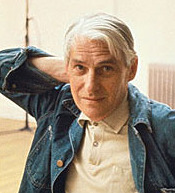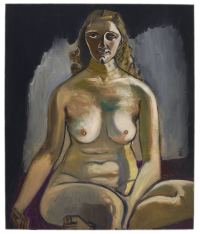When the editor of Art + Auction leaves his job just before the bellwether spring auctions, something’s up. That’s what happened last week, when Anthony Freund departed. Ted Loos, the executive editor, also left. A few weeks ago, Miranda Dempster, the creative director, walked out the door for good.
The magazine had already had its budget slashed — by more than half, some sources said, not for attribution — forcing cuts in salaries, travel budgets and freelance payments. Since January, according to one insider, there probably hasn’t been a week that at least one person hasn’t been let go.
Last week, Louise Blouin Media, which owns A+A as well as Modern Painters, Gallery Guide
 and artinfo.com, among other things, said it had hired Marisa Bartolucci, from Fulcrum, to be editorial director — the same title Tony Freund had.
and artinfo.com, among other things, said it had hired Marisa Bartolucci, from Fulcrum, to be editorial director — the same title Tony Freund had.
I’ve written for Art + Auction, and know Tony and Ted; neither wanted to talk last week. They haven’t answered my recent emails about this either. But when I contacted Louise Blouin (she sometimes also uses MacBain, her married name, though she is divorced from him) via email yesterday, she called back from the Mideast, where she’s traveling. It was late there, way past midnight, but she told me that Tony had left because she was consolidating all editorial content — print and web — under Marisa. “She knows the web,” she said — and she has also written a lot about design. She said she has asked Ted to write for LBM on a freelance basis.
“There will be no change in focus,” Ms. Blouin said, explaining that the consolidation made sense because the business is global. The website is free, and is advertising-driven. When I asked about profits, she said she never talks money, but quickly added “It [the whole business] does make money.”

 Aside from being a great statesman and a writer and a painter, Winston Churchill, whom I mentioned in my last post, was a boozer. So were dozens of famous writers and artists. Among them are Edgar Allan Poe, Ernest Hemingway, Jackson Pollock, Willem de Kooning (right), Mark Rothko, Robert Rauschenberg, Francis Bacon.
Aside from being a great statesman and a writer and a painter, Winston Churchill, whom I mentioned in my last post, was a boozer. So were dozens of famous writers and artists. Among them are Edgar Allan Poe, Ernest Hemingway, Jackson Pollock, Willem de Kooning (right), Mark Rothko, Robert Rauschenberg, Francis Bacon. 


